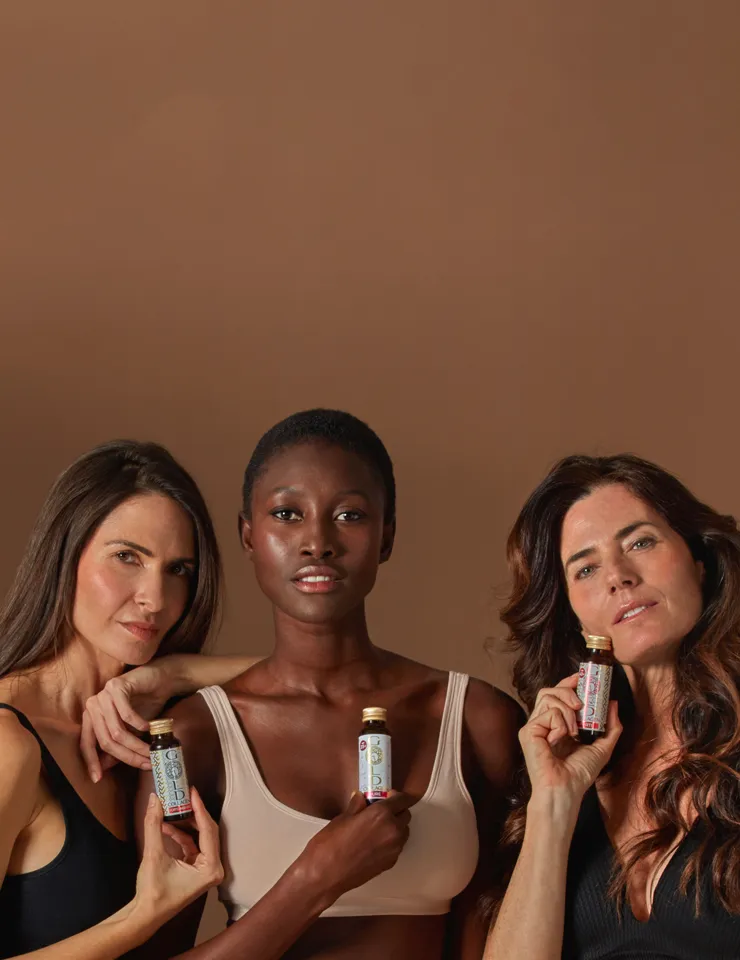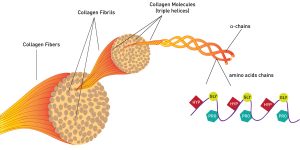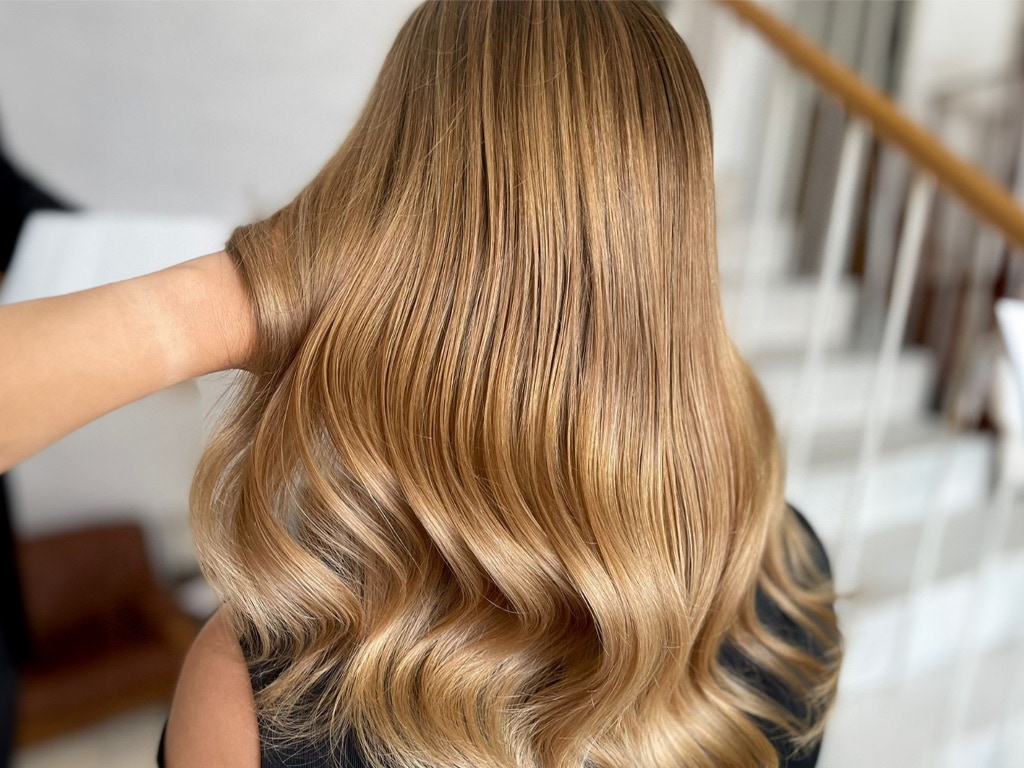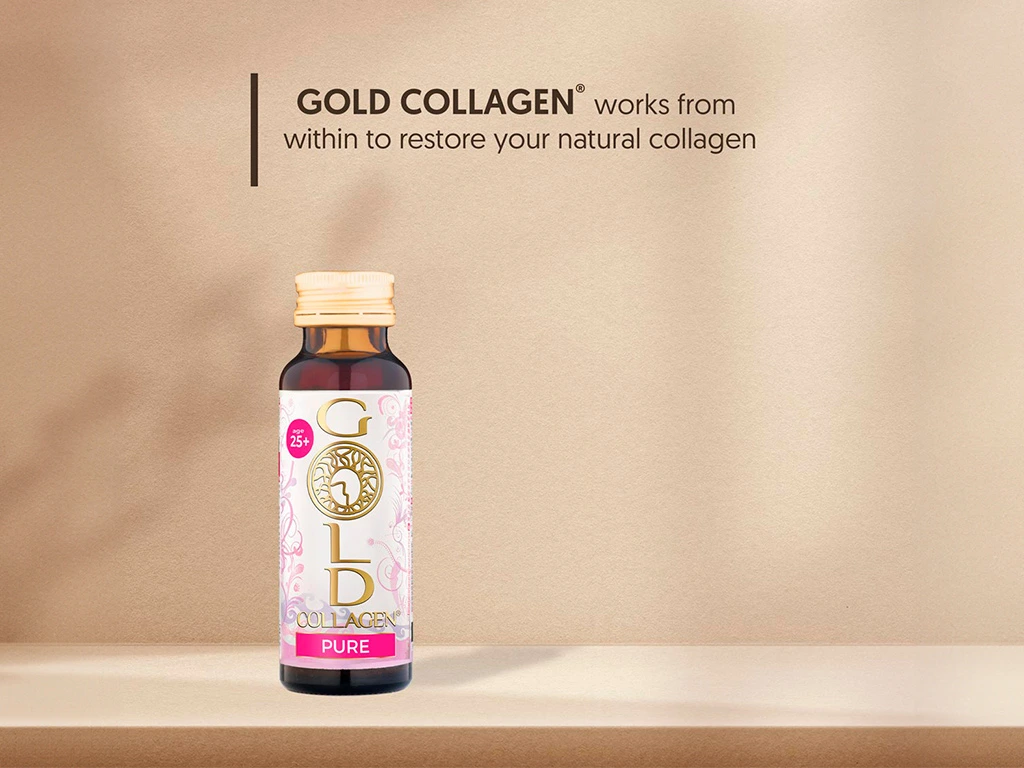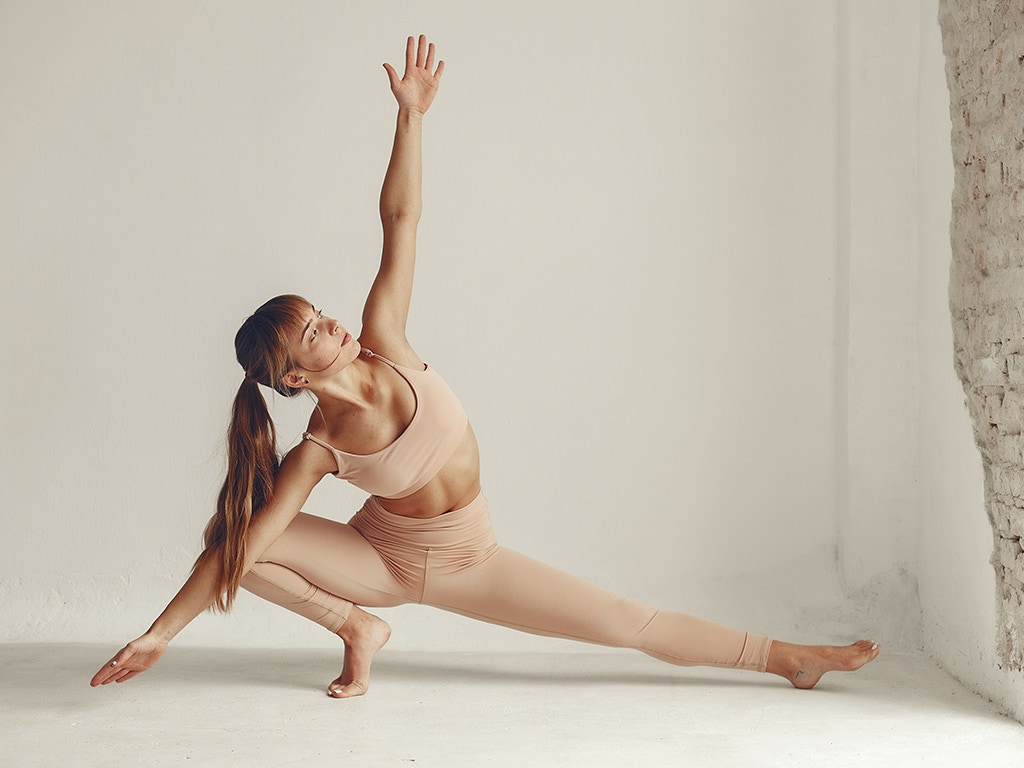Types of Collagen
-
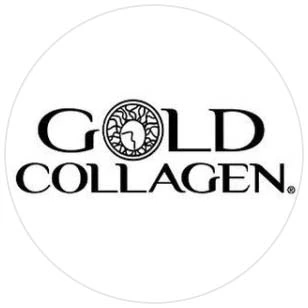 GOLD COLLAGEN
GOLD COLLAGEN - Nutrition And Beauty
- January 19, 2018
Did you know there are different types of collagen? Before you use a collagen-based product, it’s important to find out which type of collagen would fulfill your needs.
The collagen family is very big! There are a total of 28 different types of collagen present in our bodies. These proteins account for 25% – 35% of the total protein mass in mammals, and they help to provide rigidity to skin and bones. Below is a table detailing the three most common types of collagen that play a pivotal role in the structure of several tissues such as skin and joints.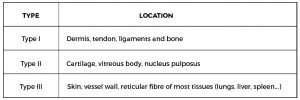 Type I collagen is the most abundant collagen in the human body. It is present in tendons, ligaments, and many other interstitial connective tissues. Interstitial connective tissues are connective tissues between the cellular elements of a structure. Type I is also the main component of human skin (80%). Type III makes up the remainder of skin collagen (15%).
Type I collagen is the most abundant collagen in the human body. It is present in tendons, ligaments, and many other interstitial connective tissues. Interstitial connective tissues are connective tissues between the cellular elements of a structure. Type I is also the main component of human skin (80%). Type III makes up the remainder of skin collagen (15%).
What are collagen fibrils and what goes into it?
In the human body 80-90% of all collagen consists of fibril-forming collagens. Collagen fibrils are formed from multiple triple helices. Then multiple collagen fibrils join to form a collagen fibre (Figure 1.). For the skin it is collagen I and III, for cartilage it is collagen II and III.
The diversity of the collagen family (collagen I, II, III) is mainly determined by the existence of several α-chains with a different number of amino acids. The amino acid content of collagen type I, II and III is predominantly formed by: glycine, proline and hydroxyproline. Interestingly, the collagen peptides found in food supplements mimic this sequence.
What is the function of collagen fibres?
Collagen fibres have many unique physical properties that contribute to the structural integrity of skin and joints, to form a dense network throughout the dermis (the inner layer of the skin) and the cartilage. The knock-on effect of this network is to provide further structural support to the epidermis (the protective outer layer of the skin) and to contribute to your joints mobility. So, what does this all mean? Collagen and elastin work together to form the extracellular matrix, giving the skin the structure, elasticity and firmness that we all want.
What are Fibroblasts?
Fibroblasts are connective tissue cells in the dermis which are responsible for producing and organising the collagen matrix. Similar cells in the cartilage are called chondrocytes. Fibroblasts and chondrocytes are sensitive to physical and chemical stimuli, which can induce the activation and proliferation of these cells. For example, adding a collagen supplement to your daily diet will support this activation process. The activation of these cells results in an increase in the production of collagen, but also in elastin and hyaluronic acid.
